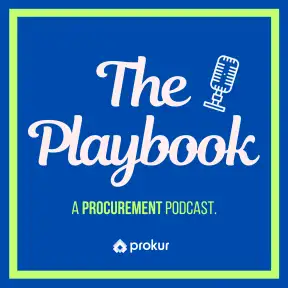Crafting a Great RFP
Welcome to The Playbook, the podcast where we explore the strategies and tips that can elevate your professional game. I'm your host, Amily Rose. And today, we're diving deep into a cornerstone of the procurement world, crafting great requests for proposals or RFPs. In procurement, the RFP is more than just a document. It's the foundation for potential collaborations and your opportunity to make a lasting impression on vendors.
Amelie Rose:Crafting a compelling RFP is not about following a cookie cutter template. It's an art that involves strategic thinking, clarity, and persuasive communication. In this episode, we're going to guide you step by step on how to create an RFP that captures vendor attention, elicits high quality responses, and sets the stage for successful partnerships. But first, let's talk about defining your objectives. Before you even begin writing, it's essential to have a clear understanding of what you hope to achieve through this procurement process.
Amelie Rose:What problems are you trying to solve, and what outcomes are you expecting? This clarity in your goals will shape the entire RFP and help ensure it aligns with your needs. Next, know your audience. Just like any piece of content, an RFP should be tailored to its readers. Consider the vendors who will be reviewing your proposal.
Amelie Rose:What are their strengths and weaknesses? What are their primary concerns and needs? By understanding your audience, you can tailor the RFP to speak directly to them, increasing the likelihood of receiving responses that meet your requirements. The next step is developing a clear structure. A well organized RFP is easier to understand and respond to.
Amelie Rose:Start with an executive summary that provides an overview of your project. Follow this with detailed sections on project scope, requirements, timeline, and evaluation criteria. Including guidelines on how vendors should format their responses is also crucial. Crafting a compelling introduction is step 4. Your introduction is your chance to make a strong first impression.
Amelie Rose:Explain who you are, your organization's mission, and the context of the project. Highlight the benefits of partnering with your organization and why vendors should be excited about the opportunity. Next, define your requirements and expectations clearly. This is the core of your RFP. Outline your requirements with precision, including technical specifications, deliverables, and compliance standards.
Amelie Rose:Avoid vague language that could lead to misinterpretation. Step 6 is setting evaluation criteria. Make it crystal clear how you will evaluate vendor proposals. Define the criteria and weight each factor according to its importance. Transparency in evaluation criteria helps vendors tailor their responses effectively to meet your needs.
Amelie Rose:Include a timeline as the 7th step. Outline key milestones, submission deadlines, and the selection process. Vendors need to know what to expect and when, so providing a detailed timeline is essential. 8th, foster open communication. Encourage vendors to ask questions and seek clarifications.
Amelie Rose:This ensures they have a clear understanding of your requirements and helps avoid misunderstandings later in the process. Review and refine your RFP in step 9. Before you finalize it, have colleagues or stakeholders review it to ensure clarity and completeness. Address any feedback and make necessary revisions to polish your document. Finally, distribute and manage responses.
Amelie Rose:Once your RFP is ready, distribute it to potential vendors through your chosen channels. Efficiently manage responses, keeping track of deadlines and vendor inquiries to ensure a smooth process. Crafting compelling RFPs is both an art and a science. By following this step by step guide, you're on the path to creating documents that engage vendors, elicit high quality responses, and lay the groundwork for fruitful collaborations. Remember, an effective RFP isn't just a document.
Amelie Rose:It's a representation of your organization's professionalism and commitment to excellence in procurement. As you continue to refine your RFP crafting skills, you'll find it becomes a valuable asset in your quest for successful partnerships and achieving your organizational goals. Go ahead and craft compelling RFPs that tell your story, articulate your needs, and invite the right partners to join you on your journey to success. That's all for today on the playbook. I'm Emily Rose, and I hope you found these tips useful.
Amelie Rose:Join us next time for more insights and tactics to help you navigate the professional landscape. Until then, happy drafting, and best of luck with your procurement adventures. And don't forget to visit procuredio to learn more about our amazing procurement products. Until next time.

